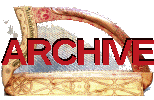
|
Sources for Gaelic harp music
Burk Thumoth

Burk Thumoth published two books, "Twelve Scotch and Twelve Irish Airs" in c. 1742 and "Twelve English and Twelve Irish Airs" in c. 1743-5. Both were subtitled "With Variations, set for the German Flute, Violin or Harpsichord by Mr Burk Thumoth". The first edition was published in London by J. Simpson; they were reissued by H. Thorowgood, London c. 1765, also by John Cox, London, and also by Thompson. None of the printings are dated.
Each tune is set on 2 staves, treble and bass, with some figures, and continues for two pages because of the variation sets. Assuming that the basses are by Thumoth it is not so clear whether the variations are or not as well.
Editions and Facsimiles
Online edition, in Sibelius Scorch format, from Na Píobairí Uilleann.
The first book, Twelve Scotch and Twelve Irish Airs, is available as a PDF download from the University of Rochester in America. Also from The NLS at archive.org
The second book, Twelve English and Twelve Irish Airs, is available as a PDF download from The NLS at archive.org.
Gaelic harp music in this book
Complete contents list from the Wighton Collection catalogue, Dundee
I think it is fair to assume that all of the Irish tunes are from the Gaelic harp repertory; most of them also appear in other Irish collections including Bunting's manuscripts.
The Scottish section (pp.2-25) contains Scots song airs. The Irish section starts at p.26:
p.26 Ailen Aroon
p.28 Yemon O nock
p.30 Past one o'clock
This is also known as Táim i mo Chodladh for example in Bunting ms29.
p.32 Chiling O guiry
p.34 Slaunt Ri Plulib
p.36 The major
p.38 Drimen Duff
p.40 Curri Koun Dilich
p.42 Mr Creagh's Irish Tune
Other versions: Oswald: Port Atholl; Lee: Mrs O’Donnel; Bunting: Seabhan na hÉirne / Port Atholl; Forde mss: Port Atholl; The Native Music of Ireland (1841): Conchabhar ua Raghallaigh. Attributed to Rory Dall O'Kane and subsequently used as the tune for Carolan's song, Seabhac na hÉirne, according to Bunting's informants including Arthur O’Neill.
p.44 Hugar Mu Fean
This is Thugamar fáin an samhradh linn, We brought the summer with us
p.46 The Irish cry
This tune and its jig are set without a bass. The Irish cry is one of a family of such tunes attested in various sources, and are basically a vocal lamenting or keening. See Breandán Ó Madagáin
Caointe agus Seancheolta Eile for more info on this type of music.
p.48 Jigg to The Irish cry
The second book is Twelve English and twelve Irish airs. The English section is p. 50-73, but it includes a Carolan tune. The Irish section starts at p. 74.
p.66 Bumpers Esquire Jones
by Carolan, DOSC65
p.74 Balin a mone
This is a variant of Ballinamona Oro or the Wedding of Ballinamona.
p.76 The rakes of Westmeath
p.78 Molly St George
p.80 My Nanny O
p.82 Da mihi Manum (more info...)
This is the usual 18th century set, similar to the version in Neal,
Oswald, &
Bunting as well as many other 18th century Irish and Scottish mss and printed books, but different from the versions in Wemyss,
MacFarlane, Dow &
Balcarres.
p.84 Planks of Connaught
This is Planxty Connor by Carolan, DOSC114.
Other versions: Bunting MS29, etc. etc.
p.86 The dangling of the Irish Bearns
p.88 The Irish Ragg
p.90 Thomas Burk
Attributed to Carolan: DOSC13
Other versions: Bunting MS29: Sir Thomas Bourk; Oswald: My Love's a bonny naithing; This is a different tune from Lee's Honble.. Thos. Bourk, according to Donal O'Sullivan.
p.92 Plea Rorkeh na Rourkough
This is Pléaráca na Ruarcach, The O'Rourke's Feast, by Carolan, DOSC 199.
Other versions: Neal: Plea Rarkeh na Rourkough or ye Irish weding improved with diferent divitions after ye Italian maner with A bass and Chorus by sigr. LORENZO BOCCHI
p.94 The Rakes of Mallow
p.96 The Fin Galians Dance
Presumably the title refers to the area North of Dublin, rather than the epic hero Fionn mac Cumhaill
Simon Chadwick